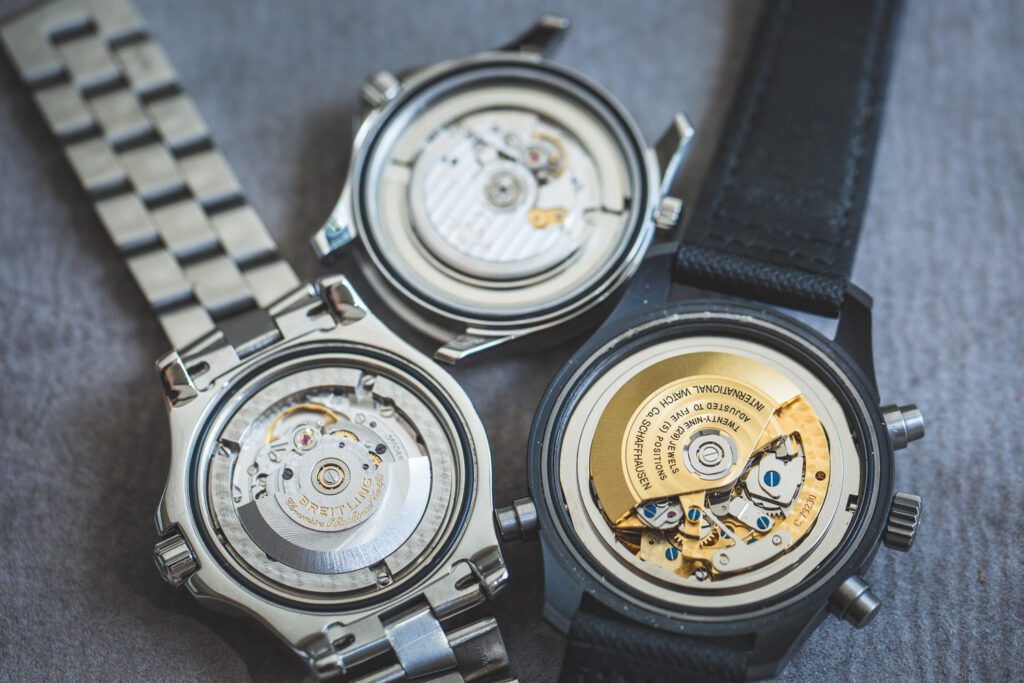The History Of ETA

Today’s Times Ticking blog is not about an “estimated time of arrival”. However, we are going to discuss the arrival (and subsequent career) of a watch movement that continues to be heavily influential on the watchmaking industry. We are, indeed, talking about the Swiss ETA movement. Swiss ETA movements are a ubiquitous force in today’s watch world. So many luxury and mid-range Swiss brands rely on these movements to run their timepieces—even if they end up modifying them later (in house). A veritable workhorse of timekeeping, the Swiss ETA has been around for over 150 years. Though aspects of its origins trace back to 1793, it didn’t get a true release until 1856. It was from that point onward that it began taking root, to grow into the powerhouse it is today.
Eternas and The ETA
ETA’s mechanical watch movements and ébauches (incomplete watch components) spent two decades without the name Eternas behind them. It was in 1876 that Dr. Joseph Girard and Urs Schild—the founders of the original manufacture—named themselves Eternas. Another two decades later, the branch of Eternas that built ébauches was named ETA SA. By 1926, ETA SA merged with FHF (Fabriques d’Horlogerie de Fontainemelon, founded 1793) to become Ébauches Ltd. This was one of many mergers that would happen throughout the 20th century for ETA.
It was in the 1970s and 1980s that the Swiss government stepped in to help mechanical manufacturers stay afloat—due to the Quartz Revolution/Crisis. Groups like the SSIH and ASUAG that had kept a variety of watch brands under their manufacturing umbrella all began to merge within the same melting pot as ETA. By 1998 the SMH (Société de Microélectronique et d’Horlogerie), which blended the SSIH and ASUAG was renamed Swatch. ETA has, since then, remained as a subsidiary of the Swatch group.
Swatch Life and Beyond

Because of Swatch’s far-reaching power, making billions every year, most brands under their umbrella employ ETA movements. In recent history, ETA had to begin selling outside of Switzerland—amid fears of them eventually monopolizing the market. This has led to ETA ébauche components being sold/utilized all over the globe. While some industry purists believe that in-house mechanical movements are a better option for quality, there are those that agree that ETA movements get enough quality control to be just as dependable. Popular calibers from ETA like the 2824, 2892, and 7750 can be found in Tudor, IWC, and Omega watches (among others) to this day. While some companies under Swatch use the pre-manufactured movements, some still opt to make in-house variations off of base ETA parts. What’s more, the phrase “Swiss Made” on a watch manufactured outside of Switzerland very likely contains ETA components—due to the watch industry’s push against a monopoly. So, with the power of modern manufacturing, it’s easier to go Swiss now more than ever. But, if one is a purist, it’s important to research which pieces contain in-house movements. Either way, ETA is here to stay—and the world of watchmaking continues to be influenced by their historical movements.
Times Ticking has been in operation for more than 30 years, since 1982. We have performed watch repair for customers both locally and internationally. If it Ticks! We KNOW it! Our team of watch repair technicians have a combined experience in watchmaking of over 120 years.

